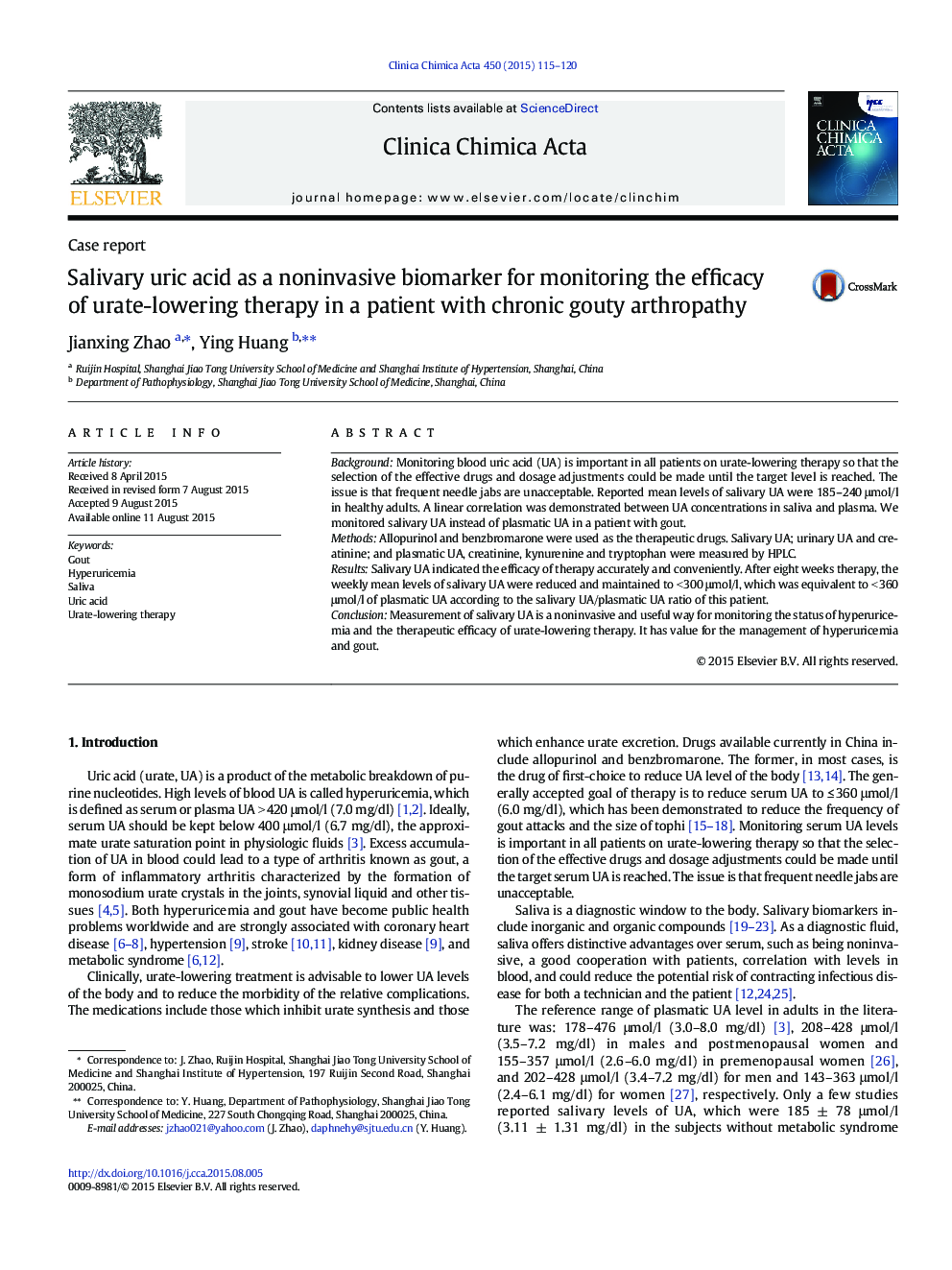| کد مقاله | کد نشریه | سال انتشار | مقاله انگلیسی | نسخه تمام متن |
|---|---|---|---|---|
| 1965244 | 1538648 | 2015 | 6 صفحه PDF | دانلود رایگان |
BackgroundMonitoring blood uric acid (UA) is important in all patients on urate-lowering therapy so that the selection of the effective drugs and dosage adjustments could be made until the target level is reached. The issue is that frequent needle jabs are unacceptable. Reported mean levels of salivary UA were 185–240 μmol/l in healthy adults. A linear correlation was demonstrated between UA concentrations in saliva and plasma. We monitored salivary UA instead of plasmatic UA in a patient with gout.MethodsAllopurinol and benzbromarone were used as the therapeutic drugs. Salivary UA; urinary UA and creatinine; and plasmatic UA, creatinine, kynurenine and tryptophan were measured by HPLC.ResultsSalivary UA indicated the efficacy of therapy accurately and conveniently. After eight weeks therapy, the weekly mean levels of salivary UA were reduced and maintained to < 300 μmol/l, which was equivalent to < 360 μmol/l of plasmatic UA according to the salivary UA/plasmatic UA ratio of this patient.ConclusionMeasurement of salivary UA is a noninvasive and useful way for monitoring the status of hyperuricemia and the therapeutic efficacy of urate-lowering therapy. It has value for the management of hyperuricemia and gout.
Journal: Clinica Chimica Acta - Volume 450, 23 October 2015, Pages 115–120
